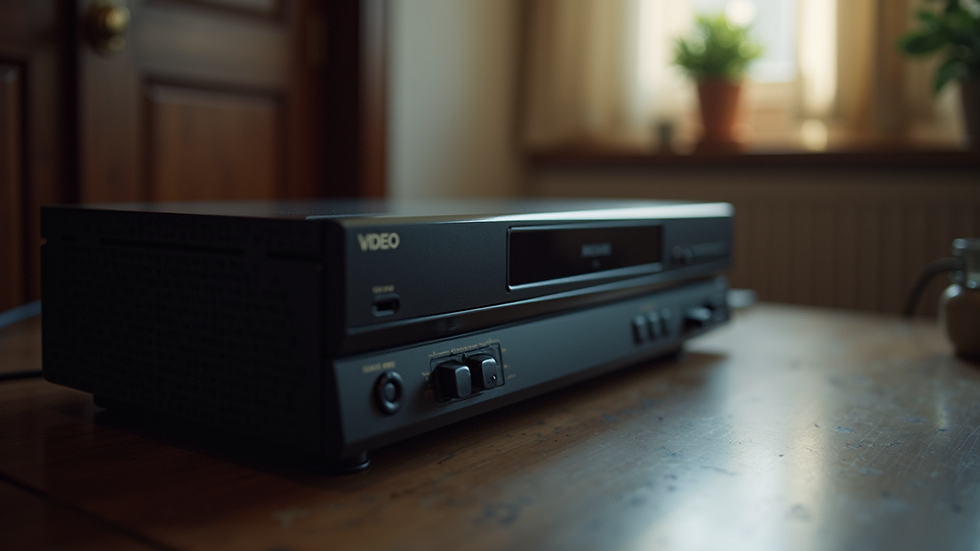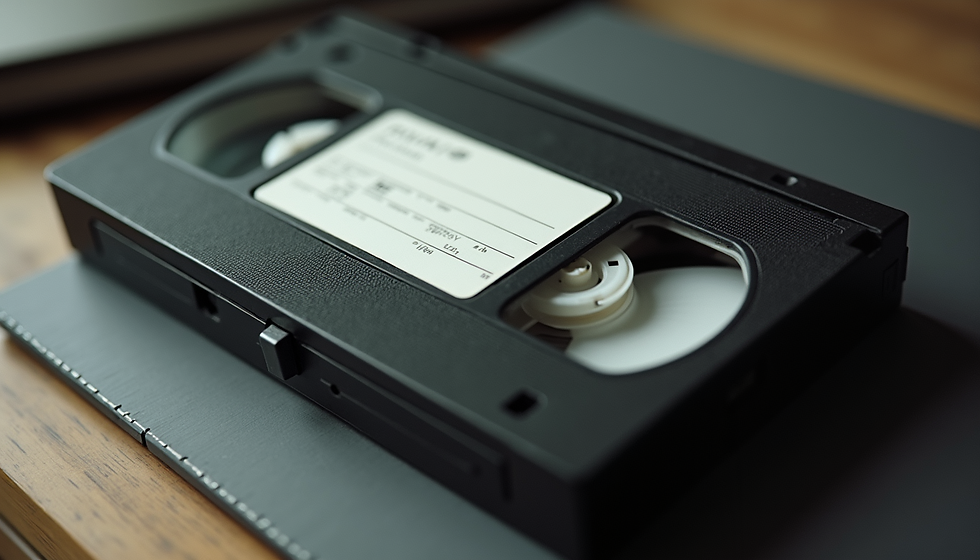Unveiling Video 2000: The Forgotten Format That Challenged the Future of Home Entertainment
- Timothy Rowlands

- 4 days ago
- 4 min read
In the fast-paced world of home entertainment, formats come and go, each one trying to capture the attention of consumers. Among these, Video 2000 is a captivating yet frequently overlooked chapter in video technology history. Launched in the early 1980s, Video 2000 aimed to transform home viewing experiences but ultimately did not meet its ambitious goals. This blog post uncovers the intriguing tale of Video 2000, examining its unique features, the competition it faced, and the reasons behind its decline.
The Birth of Video 2000
Video 2000 emerged from the collaboration between Philips and Grundig, responding to an increasing demand for home video recording. Introduced in 1979, it sought to provide a superior option compared to the then-popular Betamax and VHS formats. Among its innovative features was the ability to record on both sides of the tape. This allowed users to enjoy up to 240 minutes of recording time—double what a standard VHS tape offered.
Despite these advantages, Video 2000 struggled to gain a foothold in a VHS-dominated market. The initial excitement faded as consumers opted for VHS, which had a larger library of titles and lower prices. By 1985, estimates showed that VHS held more than 70% of the home video market.

Unique Features of Video 2000
A standout aspect of Video 2000 was its dual-sided tape design. This innovation allowed users to flip the tape over, effectively doubling the recording time without needing to change cassettes. In a period when convenience was crucial for consumers, this feature was a significant selling point.
Moreover, Video 2000 offered superior resolution compared to its counterparts, promising a clearer and more vibrant picture. It also included advanced features like time-shifting capabilities, allowing users to record shows and watch them later. For instance, viewers could record a show while watching another, a novel concept in the late 1970s.
However, the complexity of devices required for Video 2000 and the need for specialised equipment deterred potential users, making it hard for the format to penetrate the market effectively.
The Competition: VHS and Betamax
To understand why Video 2000 faded from view, it is essential to look at its competition. Betamax, which launched in the mid-1970s, was the first widely popular home video format, celebrated for its superior picture quality. Despite its merits, Betamax’s shorter recording time of about 60 minutes and higher price point limited its appeal to many households.
Conversely, VHS quickly emerged as the more consumer-friendly option. With longer recording times—up to 240 minutes—and a lower entry price, VHS became the go-to format for home users. This competition exemplified how market dynamics can overshadow even more advanced technology.
Video 2000 entered this crowded landscape with the hope of establishing a niche. However, the sheer popularity of VHS and its vast library of content made it nearly impossible for Video 2000 to gain traction.
Marketing Missteps
Another critical reason for the decline of Video 2000 was its marketing strategy. Philips and Grundig struggled to effectively convey the benefits of their format to consumers. While they emphasised technical specifications, they failed to create a relatable story that resonated with everyday viewers.
In contrast, VHS manufacturers tapped into the rising home video rental market by marketing their format as the top choice for movie lovers. This savvy approach made VHS the preferred brand, while many consumers remained unaware of the Video 2000 format and its potential benefits.
The Decline of Video 2000
By the mid-1980s, it became evident that Video 2000 would not achieve the success its creators envisioned. With a limited library of content and the overwhelming dominance of VHS, Video 2000 gradually faded from the market. Retailers began removing Video 2000 products, while manufacturers shifted their focus toward more promising technologies like laser disc and CD.
Despite its failure, Video 2000 had a lasting impact on the industry. It highlighted the importance of understanding consumer perception and strong marketing strategies in product success. The lessons learned from Video 2000 influenced future home entertainment technologies.
Legacy and Lessons Learned
Today, Video 2000 is largely viewed as a "what could have been" story. While it did not achieve the widespread popularity its creators anticipated, it laid the groundwork for future innovations in video technology. The dual-sided tape feature would eventually inspire the development of rewritable discs and other storage solutions that prioritise efficiency.
The challenges faced by Video 2000 remind us of the significance of aligning product features with consumer needs and preferences.
Reflection on a Forgotten Format
Video 2000 stands as a fascinating example of ambition and innovation in the realm of home entertainment. Its story is not solely about a forgotten format; it represents the ever-evolving landscape of technology.
As we embrace new advancements in home entertainment, the lessons from Video 2000 are still pertinent. Understanding the balance between innovation and consumer demand remains critical for any format seeking to make its mark in the industry.
In the end, while Video 2000 may be a footnote in history, its narrative is one of aspiration, innovation, and the relentless quest for progress in home entertainment.











Comments